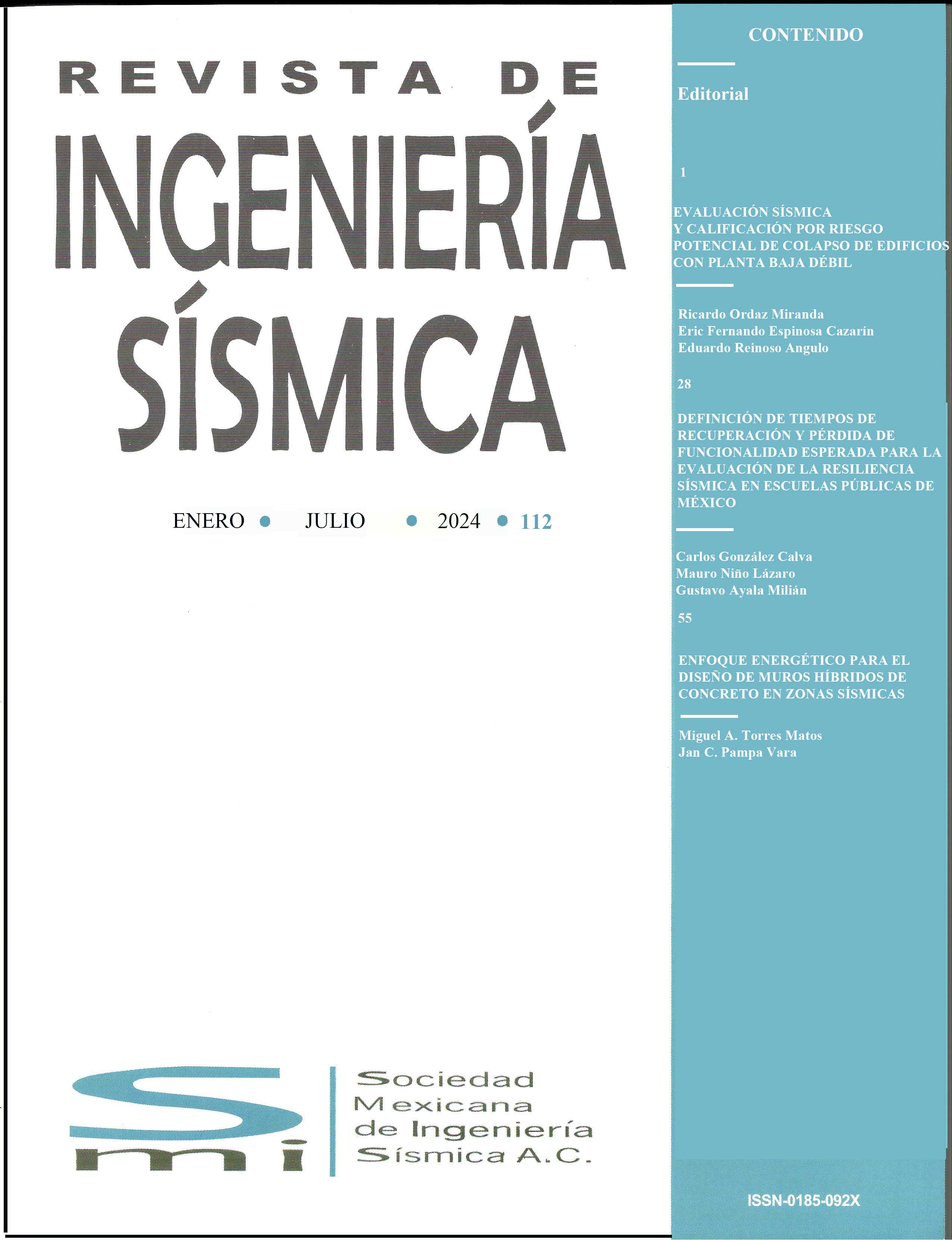SEISMIC BEHAVIOR OF “FLOOR TO FLOOR” PRECAST CONCRETE FACADES
DOI:
https://doi.org/10.18867/ris.98.491Abstract
During recent earthquakes in Mexico, it has been observed that despite a proper behavior of the structure, there are failures and damage among non-structural elements. This paper presents analytical time-history analysis and results of the seismic behavior of “floor to floor” precast concrete facades. This analysis includes the evaluation of accelerations and displacements at the supports of the panels in a 15-story building. For the structural design, the 2004 Mexico City code has been used. An incremental dynamic analysis was carried out using the record of the 1985 earthquake at the site SCT. It has been observed that after reducing the seismic design forces by ductility and over strength, it may be possible to ignore that the actual forces are larger than the design forces, which may cause damage to the precast concrete facades.Downloads
References
Arnold, C (2016), “Seismic safety of the building envelope”, Whole building design guide. http://www.wbdg.org/resources/env_seismicsafety.php. Consultado el 08 de febrero de 2017.
Baird, A, A Palermo y S Pampanin (2012), “Façade damage assessment of concrete buildings in the 2011 Christchurch earthquake”, Structural Concrete, Journal of the FIB. DOI: 10.1002/suco.201100040
Baker, J W y C A Cornell (2005), “A vector-valued ground motion intensity measure consisting of spectral
acceleration and epsilon”, Earthquake Engineering & Structural Dynamics, Vol. 34, pp. 1193-1217. DOI: 10.1002/eqe.474
Bojórquez, E y I Iervolino (2011), “Spectral shape proxies and nonlinear structural response”, Soil Dynamics and Earthquake Engineering, Vol. 31, No. 7, pp. 996-1008. DOI: 10.1016/j.soildyn.2011.03.006
Bojórquez, E, R Chávez, A Reyes-Salazar, S E Ruiz y J Bojórquez (2017), “A new ground motion intensity measure IB”, Soil Dynamics and Earthquake Engineering, Vol. 99, pp. 97-107. DOI: 10.1016/j.soildyn.2017.05.011
Charney, F A, y J R Harris (1989) “The effect of architectural precast concrete cladding on the lateral response of multistory buildings”, Memorias del Architectural Precast Concrete Cladding, pp. 80-96.
FEMA (2011), “FEMA E-74, Reducing the risks of nonstructural earthquake damage – A practical guide”
GDF, Gobierno del Distrito Federal (2004) “Normas Técnicas Complementarias para Diseño por Sismo, Gaceta Oficial del Distrito Federal, Tomo II, No. 103-BIS, pp. 55-77.
Goodno, B J, J Craig y A Zeevaert-Wolf (1989), “The Mexico earthquake of September 19, 1985 – Behavior of heavy cladding components”, Earthquake Spectra, Vol. 5, No.1, 1989. DOI: 10.1193/1.1585519
Hareer R W (2007), “Seismic response of building façade system with energy absorbing connections”, Tesis Doctoral, Center for Built Environment and Engineering Research.
Hunt, J y B Stojadinovic (2010), “Seismic performance assessment and probabilistic repair cost analysis of precast concrete cladding systems for multistory buildings”, Reporte Técnico No. 2010/110, Pacific Earthquake Engineering Research Center.
Hutchinson, T, E Pantolli, K McMullin, M Hildebrand y G Underwood (2014), “Seismic drift compatibility of architectural precast concrete panels and connections: A design guide for engineers”. Reporte Técnico No. SSRP-14/16, University of California.
Iverson, J K (1989), “Concrete cladding connections in earthquake country”, Memorias del Architectural Precast Concrete Cladding, pp. 202-216.
McMullin, K, T Wong, C Choi y K Chan (2004), “Seismic performance states of precast concrete cladding connections”, Memorias del XIII Congreso Mundial de Ingeniería Sísmica, No. 3379.
Precast Concrete Institute, PCI (2007), Architectural Precast Concrete, 3ra edición.
Reinoso, E (2007), “Riesgo sísmico de la ciudad de México”. Academia de ingeniería A.C.
Reinoso, E, M E Rodríguez y R Betancourt (2000), “Manual de diseño de estructuras prefabricadas y presforzadas”. ANIPPAC - Instituto de Ingeniería UNAM.
Rodríguez, M E y J I Restrepo (2012), “Práctica y diseño de edificios en México – Cambios necesarios”, Revista de Sociedad Mexicana de Ingeniería Sísmica, No. 86, pp. 89-118.
Vamvatsikos, D y C A Cornell (2002), “Incremental dynamic analysis”, Earthquake engineering and structural dynamics, No. 31, pp. 491-512. DOI: 10.1002/eqe.141
Wang, M L (1987), “Cladding performance on a full scale test frame”, Earthquake Spectra, Vol. 3, No. 1, pp. 119-173. DOI: 10.1193/1.1585423






